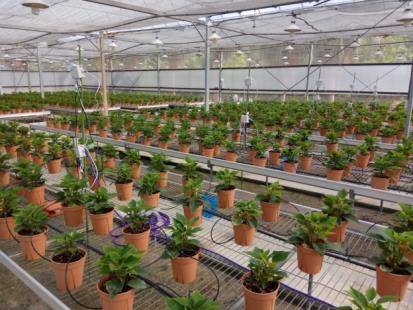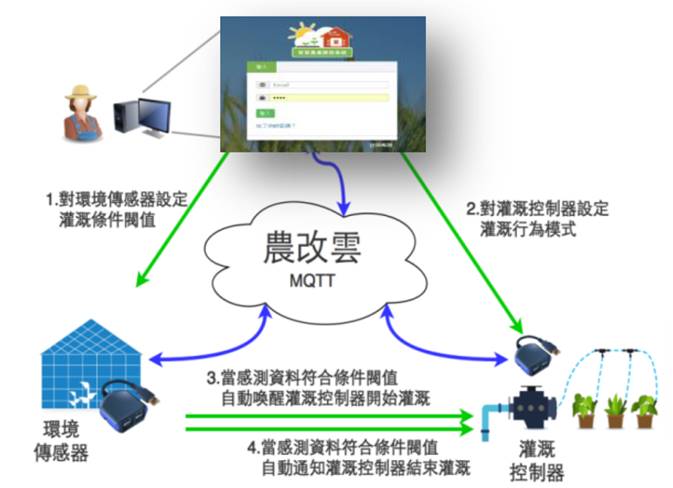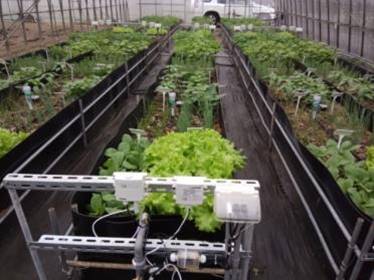In recent years, many companies have adopted automatic irrigation facilities and scheduling control to reduce labor costs and improve the quality of products. However, factors, such as plant age, growth conditions of various varieties and weather conditions, affect the water demand of the plants. Therefore, rigid irrigation schedule that is unable to timely meet the plants’ demand for water is not the optional irrigation model.
As a shift to smart management of agricultural production, information communication, Internet of Things, machine learning and cultivation management technology are integrated and applied to the production of greenhouse vegetables and potted flowers. Wireless communication sensing system and automatic irrigation management system are also designed and set up for greenhouse agriculture according to the usual agricultural practice. By using sensors to monitor the environment for crop cultivation and machine learning to analyze the crop irrigation management prediction model, we have developed a control module that can turn on and off the field management facilities, making the facilities a smart crop cultivation management system with learning ability.

▲ Application of greenhouse crop cultivation management to strawberry cultivation |

▲ Intelligent Agriculture Development System Operational Framework
|
The main functions of the aforementioned smart agricultural development system include data monitoring, field and monitoring devices installation, crop physiological indices setup, visual management program editing, R modeling and user operation management interface, interface with the database of the Central Weather Bureau by application programming interface (API) and transmission of information to the Cloud for storage and computing through Message Queuing Telemetry Transport (MQTT) for real-time monitoring and management of field facilities.
The system is mainly used for the production in greenhouse facilities. The webpage building blocks can set the optimum values based on crop types, while the sensors capture light, ambient temperature, soil and environment temperature and wind speed, and then send the data back to the Cloud for statistical analysis. After comparing the data with the optimum values, the system can control and adjust the facilities and equipment, such as shading net, artificial lighting, fans, water misters, irrigation facilities and anemometers. By using this system, farmers can set up their own conditions for their fields, monitoring devices and management requirements based on the types of crops, fertility conditions, cultivation environment and equipment requirements. This smart management system allows farmers to automatically monitor and manage the operation of the field equipment through programs.
 Automatic irrigation trial
Automatic irrigation trialThis system is provided to agricultural experts and farmers free of charge. In addition to assisting the experts in developing smart management modes for crops, it also allows farmers to adjust management conditions and remotely monitor and control the environment in which the crops grow through smart phones or computers based on the needs of the crops.
In the future, if transmission protocol is unified, the environmental sensors, controllers and information systems developed by domestic companies can be concatenated to this system by MQTT transmission protocol based on the concatenation service provided by this system. This helps the domestic facility providers and agricultural automatic monitoring operators become more intelligent, reduce development costs, improve industrial competitiveness, and further explore global agricultural opportunities through network remote monitoring and intelligent management modules.